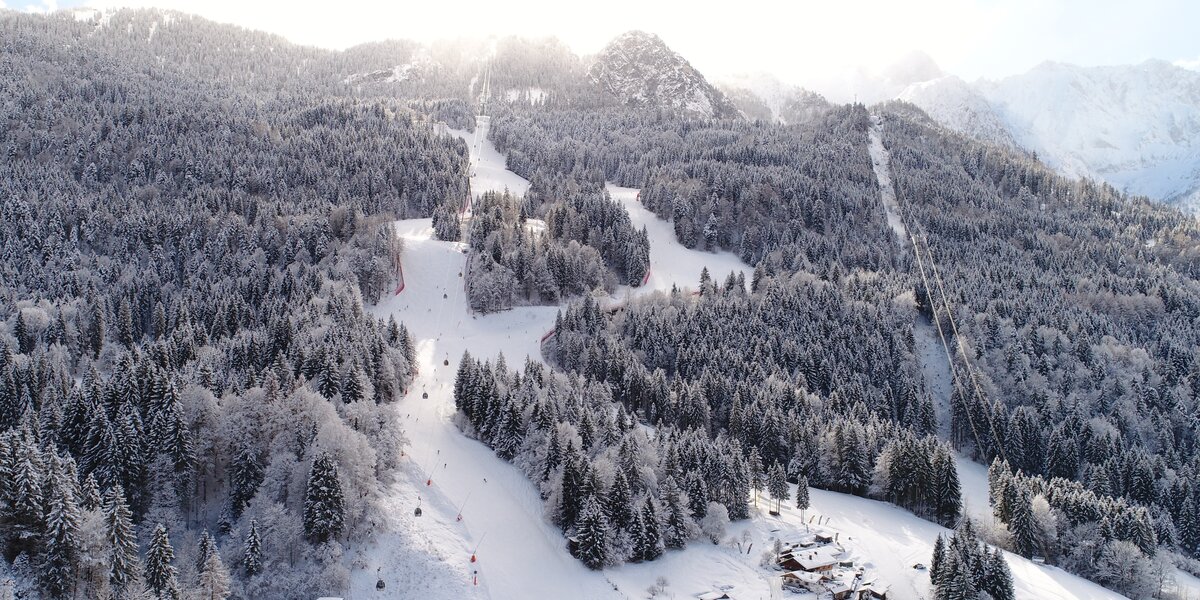Winter season 2022/23
Energy – Snowmaking – Costs
Energy
Energy requirements and saving measures
Irrespective of the energy crisis, the Bayerische Zugspitzbahn began conducting regular energy audits years ago. An energy audit means carrying out the most precise energy requirement analysis of the entire company in order to determine all energy-saving potential.
What we are already doing
- Installation of intelligent electricity meters that show above-average consumption and thus make it remediable.
- Replacement of old light bulbs
- Insulation of hot water pipes
- Pump replacements, use of efficient heating pumps
- Replacement of old windows
- Use of synthetic diesel (GTL fuel from Shell)
- Use of SnowSat Lidar for the exact recording of the snow height; This reduces the diesel consumption of the snow groomers (through more targeted distribution) and reduces the amount of snow required.
- Reduction of print advertising material: only 2-3 print types per year
- Continuous expansion of photovoltaic systems on the roofs of the cable cars and lift stations for self-generation of electricity.
- The grass clippings from the meadows in Garmisch-Classic are taken to the regional biogas plant. This energy gain can supply 117 households for a year.
Additional measures
Due to the current energy crisis, further savings potential will be implemented in winter 2022/23. The measures listed cannot compensate for the energy requirement of snowmaking, but overall they help to further reduce the energy requirement.
- Restricted snowmaking, i.e. depending on the weather and temperature, it is selected which areas of the slopes must be snowed in order to ensure operation.
- Reduction of snow cover and slope width if the amount of natural snow is limited (always taking into account slope safety).
- Switching off the lighting at night at the mountain stations of the Alpspitzbahn and Cable car Zugspitze (as far as possible)
- No radiant heaters in the outdoor areas of the restaurants.
- No seat heaters in the lifts.
- When the number of guests is low, the driving speed for cable cars can be reduced by up to 50%.
- When the weather is good, the cabins are not garaged at night.
FAQ
In 2019/2020 the energy costs amounted to around EUR 2.5 million. The following year 2020/2021 is not representative as a comparison due to the long Covid lockdown.
This is currently not foreseeable. At present, the additional costs cannot be precisely quantified, as there are no binding political specifications regarding an electricity price cap or electricity price stop.
All snow groomers run on GTL synthetic fuel. GTL has the advantage of lower emissions, slightly lower consumption and is biodegradable.
Our snow groomers are also equipped with the latest GPS technology for snow depth analysis. In this way, snow can be used even more sparingly on the slopes. The snow groomer drivers are informed about the snow depth under the snow groomer with centimeter accuracy via a digital display in the cockpit. In this way, an even snow depth can be ensured everywhere, saving snow and thus energy and water.
On a full day of ski operation with 8.5 hours, the seat heating on the Kandahar-Express requires a total of approx. 30 kWh for all 4-seater chairs.
The prices for the coming ski season were already set in spring 2022. All details can be found in the price overview.
During the high season from December 24th, 2022 to January 8th, 2023 and from February 18th, 2023 to February 26th, 2023 there will be the following changes in the Garmisch-Classic area:
- All tickets cost 2 euros extra – with the exception of the children's fare within the family ticket.
- The morning ticket (until 1:00 p.m.) is not available.



